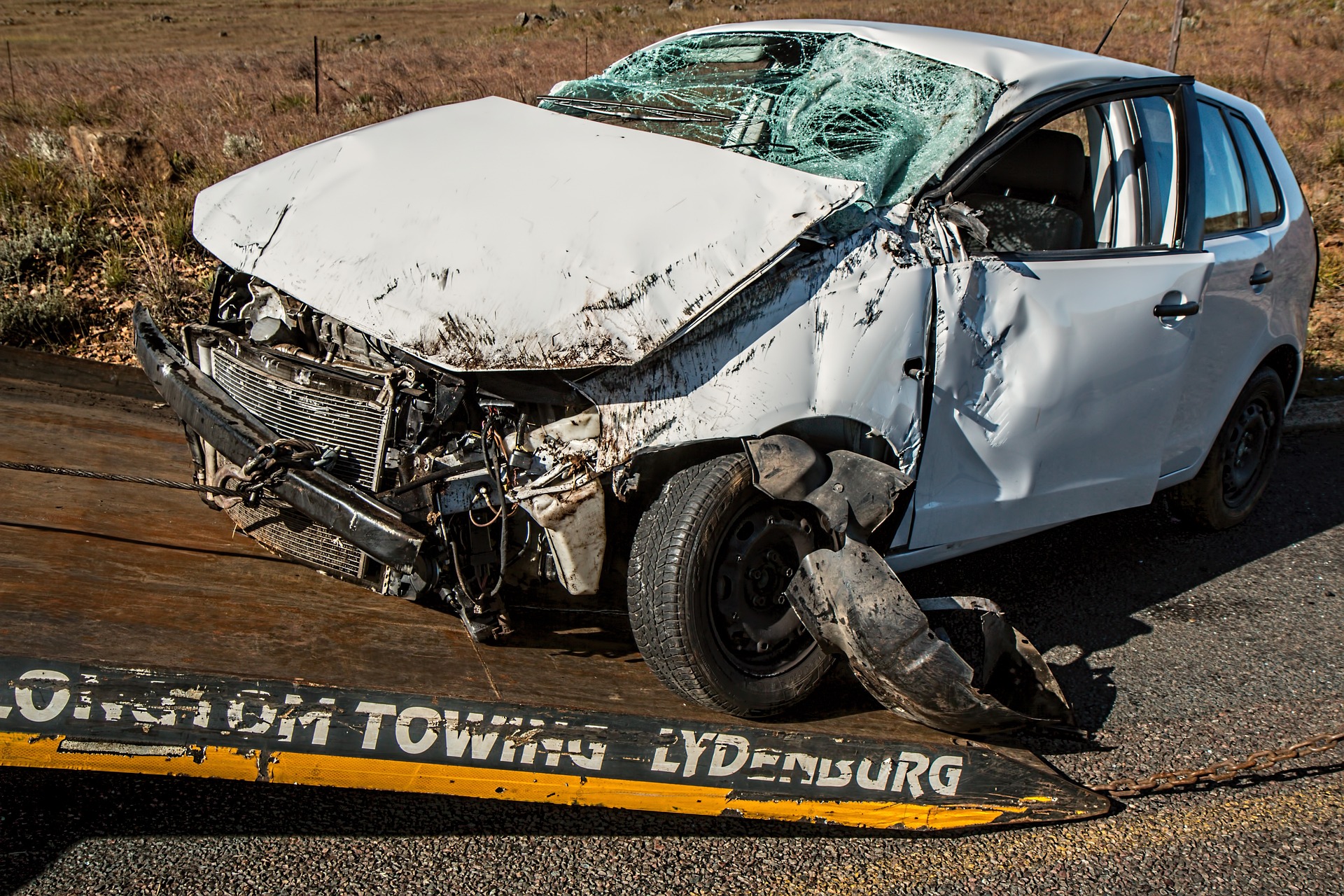You may have lent your car to a friend, a family member, or a co-worker for various reasons. Maybe they needed a ride to the airport, to run some errands, or to take a road trip. Whatever the case, you probably didn’t expect them to get into an accident while driving your car.
But accidents happen, and sometimes they involve someone else behind the wheel of your vehicle. What happens then? Who is liable for the damages and injuries? Whose insurance will cover the costs? How will this affect your premiums and driving record?
These are some of the questions that may arise when someone else is driving your car and gets in an accident. The answers are not always straightforward and may depend on several factors, such as:
- The relationship between you and the driver
- The permission you gave to the driver
- The insurance policies of both parties
- The state laws and regulations
In this article, we’ll explore these factors in detail and provide some tips on how to handle this situation. We’ll also compare and contrast different scenarios and outcomes based on real-life examples.
1. The Relationship Between You and the Driver
One of the first things that will determine what happens if someone else is driving your car and gets in an accident is the relationship between you and the driver. This is because most car insurance policies have a clause called “permissive use” that covers occasional drivers who have permission to use your car.
Permissive use means that if you lend your car to someone who is not listed on your policy, such as a friend, a relative, or a co-worker, they will be covered by your liability insurance if they cause an accident. Liability insurance is part of your auto policy that pays for other people’s expenses when you cause an accident. It has two main components: bodily injury liability and property damage liability.
Bodily injury liability pays for other people’s medical bills, pain, and suffering, lost wages, and even funeral costs when they’re injured in a traffic-related accident you cause. Property damage liability pays for other people’s property damage when their car, fence, building, or personal belongings are damaged in a traffic-related accident you cause.
However, permissive use has some limitations and exclusions.
For example:
- It only applies to occasional drivers who use your car infrequently and with your consent. If someone uses your car regularly or lives with you, they should be added to your policy as a named driver or excluded from coverage.
- It only covers liability claims up to your policy limits. If the damages exceed your limits, you and the driver may be held responsible for paying the difference out of pocket.
- It may not cover comprehensive and collision claims. Comprehensive and collision coverage are optional types of insurance that pay for repairs to your own car after an accident or other events, such as theft, vandalism, fire, or hail. If you have these coverages on your policy, they may not extend to permissive drivers unless they have their own insurance that covers these claims.
- It may not apply in some states or situations. Some states have stricter rules about permissive use and may require written consent or proof of permission from the owner. Some situations may also void permissive use, such as driving without a valid license, driving under the influence, or using the car for illegal purposes.
Therefore, it’s important to check your policy terms and conditions before lending your car to someone else. You should also ask them about their own insurance status and driving record. If they have their own car insurance policy, it may act as a secondary source of coverage if your policy limits are exhausted or if your policy doesn’t cover certain claims.
2. The Permission You Gave to the Driver
Another factor that will affect what happens if someone else is driving your car and gets in an accident is the permission you gave to the driver. This is because most car insurance policies have a clause called “non-permissive use” that excludes drivers who don’t have your permission to use your car.
Non-permissive use means that if someone takes your car without your consent or knowledge, such as a thief, a joy
rider, or a valet, they are not covered by your insurance policy. Non-permissive use means that your insurance company will not pay for any damages or injuries caused by the unauthorized driver. Instead, the driver will be held liable for the accident and may face legal consequences.
However, non-permissive use also has some exceptions and nuances.
For example:
- It may not apply if you have comprehensive coverage on your policy. Comprehensive coverage is an optional type of insurance that pays for repairs to your own car after events that are not related to collisions, such as theft, vandalism, fire, or hail. If your car is stolen and damaged by the thief, your comprehensive coverage may cover the repairs, regardless of who was driving.
- It may not apply if the driver has their own insurance policy. If the driver who took your car without your permission has their own car insurance policy, it may act as a primary source of coverage if they cause an accident. In that case, your insurance company may not be involved at all, unless the driver’s policy limits are exhausted or their policy doesn’t cover certain claims.
- It may depend on the circumstances and evidence of permission. Sometimes, it may be unclear whether you gave permission to the driver or not. For example, if you left your keys in the ignition and someone took your car, or if you had a verbal agreement with the driver that was not witnessed by anyone else. In these cases, your insurance company may investigate the situation and determine whether permissive use applies or not.
Therefore, it’s important to be careful about who you lend your car to and how you communicate your permission. You should also keep your keys in a safe place and never leave them in your car unattended. If someone takes your car without your consent, you should report it to the police and your insurance company as soon as possible.
3. The Insurance Policies of Both Parties
Another factor that will influence what happens if someone else is driving your car and gets in an accident is the insurance policies of both parties: you as the owner and the driver as the borrower. This is because different insurance policies may have different rules and coverages for permissive and non-permissive drivers.
As we mentioned before, most car insurance policies have a permissive use clause that covers occasional drivers who have your permission to use your car. However, this clause may vary depending on the insurance company, the state, and the type of policy. For example:
- Some insurance companies may have more generous or restrictive definitions of permissive use than others. Some may allow anyone who has your verbal consent to drive your car, while others may require written consent or proof of permission. Some may cover any driver who uses your car infrequently, while others may limit the number of times or miles they can drive.
- Some states may have more strict or lenient regulations for permissive use than others. Some may require minimum liability limits for permissive drivers, while others may allow lower limits or no limits at all. Some may mandate that permissive drivers are covered by both primary and secondary policies, while others may allow only one policy to apply.
- Some types of policies may have more comprehensive or limited coverages for permissive drivers than others. Some may include comprehensive and collision coverages for permissive drivers, while others may exclude them. Some may offer additional coverages for permissive drivers, such as medical payments, uninsured/underinsured motorist, or rental reimbursement.
Similarly, most car insurance policies have a non-permissive use clause that excludes drivers who don’t have your permission to use your car. However, this clause may also vary depending on the insurance company, the state, and the type of policy.
For example:
- Some insurance companies may have more flexible or rigid definitions of non-permissive use than others. Some may consider any unauthorized use of your car as non-permissive use, while others may make exceptions for certain situations or relationships. Some may investigate the circumstances and evidence of permission more thoroughly than others.
- Some states may have more clear or vague laws for non-permissive use than others. Some may define non-permissive use explicitly in their statutes or regulations, while others may leave it up to interpretation by courts or arbitrators. Some may impose penalties or sanctions for non-permissive use on both parties, while others may only hold one party accountable.
- Some types of policies may have more extensive or narrow coverages for non-permissive drivers than others. Some may include comprehensive coverage for non-permissive drivers, while others may exclude them. Some may offer uninsured/underinsured motorist coverage for non-permissive drivers, while others may not.
Therefore, it’s important to compare different insurance policies and coverages before choosing one that suits your needs and preferences. You should also review your policy periodically and update it if there are any changes in your situation or the drivers who use your car. If you need help finding the best car insurance rates and options, you can use a free online tool like Jerry to compare quotes from multiple providers in minutes.
4. The State Laws and Regulations
Another factor that will impact what happens if someone else is driving your car and gets in an accident is the state laws and regulations that govern car insurance and liability. This is because different states have different rules and requirements for car insurance and liability, such as:
-
The minimum liability limits that drivers must carry on their policies.
These are the maximum amounts that your insurance company will pay for bodily injury and property damage claims if you cause an accident. They vary from state to state, ranging from $10,000 to $50,000 per person for bodily injury, $20,000 to $100,000 per accident for bodily injury, and $5,000 to $25,000 per accident for property damage.
-
The type of liability system that applies to car accidents.
There are two main types of liability systems: fault-based and no-fault. In a fault-based system, the driver who causes an accident is responsible for paying for the damages and injuries of the other parties involved. The injured parties can file a claim with their own insurance company, the at-fault driver’s insurance company, or sue the at-fault driver in court. In a no-fault system, each driver’s own insurance company pays for their own damages and injuries, regardless of who caused the accident. The injured parties cannot sue the at-fault driver unless they meet certain thresholds of severity or cost.
-
The additional coverages that drivers must or may carry on their policies.
Besides liability insurance, some states may require drivers to carry other types of insurance on their policies, such as personal injury protection (PIP), uninsured/underinsured motorist (UM/UIM), or medical payments (MedPay). These coverages pay for your own medical expenses or those of your passengers after an accident, regardless of who was at fault. They may also cover other costs, such as lost wages, funeral expenses, or pain and suffering. Some states may not require these coverages but allow drivers to purchase them voluntarily.
Therefore, it’s important to know the car insurance laws and regulations of your state and the state where the accident occurred. You should also comply with the mandatory insurance requirements and carry enough coverage to protect yourself and others in case of an accident. If you’re unsure about the laws or coverages in your state or another state, you can consult a licensed insurance agent or a qualified attorney for advice.
5. Tips on How to Handle This Situation
If someone else is driving your car and gets in an accident, you may be wondering what to do next. Here are some tips on how to handle this situation:
-
Stay calm and don’t panic.
Accidents can be stressful and scary, but try to remain calm and composed. Don’t admit fault or blame anyone at the scene. Don’t argue or fight with the other parties involved. Don’t sign any documents or make any statements without consulting your insurance company or a lawyer.
-
Check for injuries and call for help.
Check yourself and your passengers for any injuries. If anyone is hurt or unconscious, call 911 immediately and request medical assistance. If possible, move your car to a safe place away from traffic and turn on your hazard lights.
-
Exchange information and document the scene.
Exchange information with the other driver(s) involved in the accident, such as name, address, phone number, license plate number, driver’s license number, insurance company name, policy number, and agent’s name and phone number. If there are any witnesses, get their contact information as well. Take pictures or videos of the scene, including the damage to all vehicles involved, the road conditions, the traffic signs and signals, and the location of the accident. Write down or record any details you can remember about the accident, such as the date, time, weather, speed, direction, and cause of the collision.
-
Contact your insurance company and report the accident.
Call your insurance company as soon as possible after the accident and give them all the information and documentation you have collected. Explain what happened and who was driving your car. Follow their instructions and cooperate with their investigation. Ask them about your coverage, deductibles, and claim process. If you have rental reimbursement coverage on your policy, ask them about getting a rental car while your car is being repaired.
-
Contact the driver and their insurance company.
If the driver who was driving your car has their own insurance policy, you should also contact them and their insurance company. Give them your information and documentation as well. Ask them about their coverage, deductibles, and claim process. If they don’t have their own insurance policy or if their policy doesn’t cover certain claims, you may have to pay for some or all of the damages out of pocket or sue them for reimbursement.
-
Seek legal advice if necessary.
If the accident was serious or complicated, or if you are facing any disputes or lawsuits from the other parties involved, you may want to consult a qualified attorney who specializes in car accidents and personal injury law. They can help you protect your rights and interests, negotiate with the insurance companies and other parties, and represent you in court if needed.

Conclusion
Lending your car to someone else can be a risky decision that may have serious consequences if they get into an accident while driving your car. What happens then depends on several factors, such as:
- The relationship between you and the driver
- The permission you gave to the driver
- The insurance policies of both parties
- The state laws and regulations
To avoid or minimize any problems or losses in this situation, you should:
- Check your policy terms and conditions before lending your car to someone else
- Ask them about their own insurance status and driving record
- Keep your keys in a safe place and never leave them in your car unattended
- Report any unauthorized use of your car to the police and your insurance company
- Compare different insurance policies and coverages before choosing one that suits your needs and preferences
- Review your policy periodically and update it if there are any changes in your situation or the drivers who use your car
- Follow these tips on how to handle this situation if it happens
We hope this article has helped you understand what happens if someone else is driving your car and gets in an accident. If you need more information or assistance on this topic, feel free to contact us anytime.


